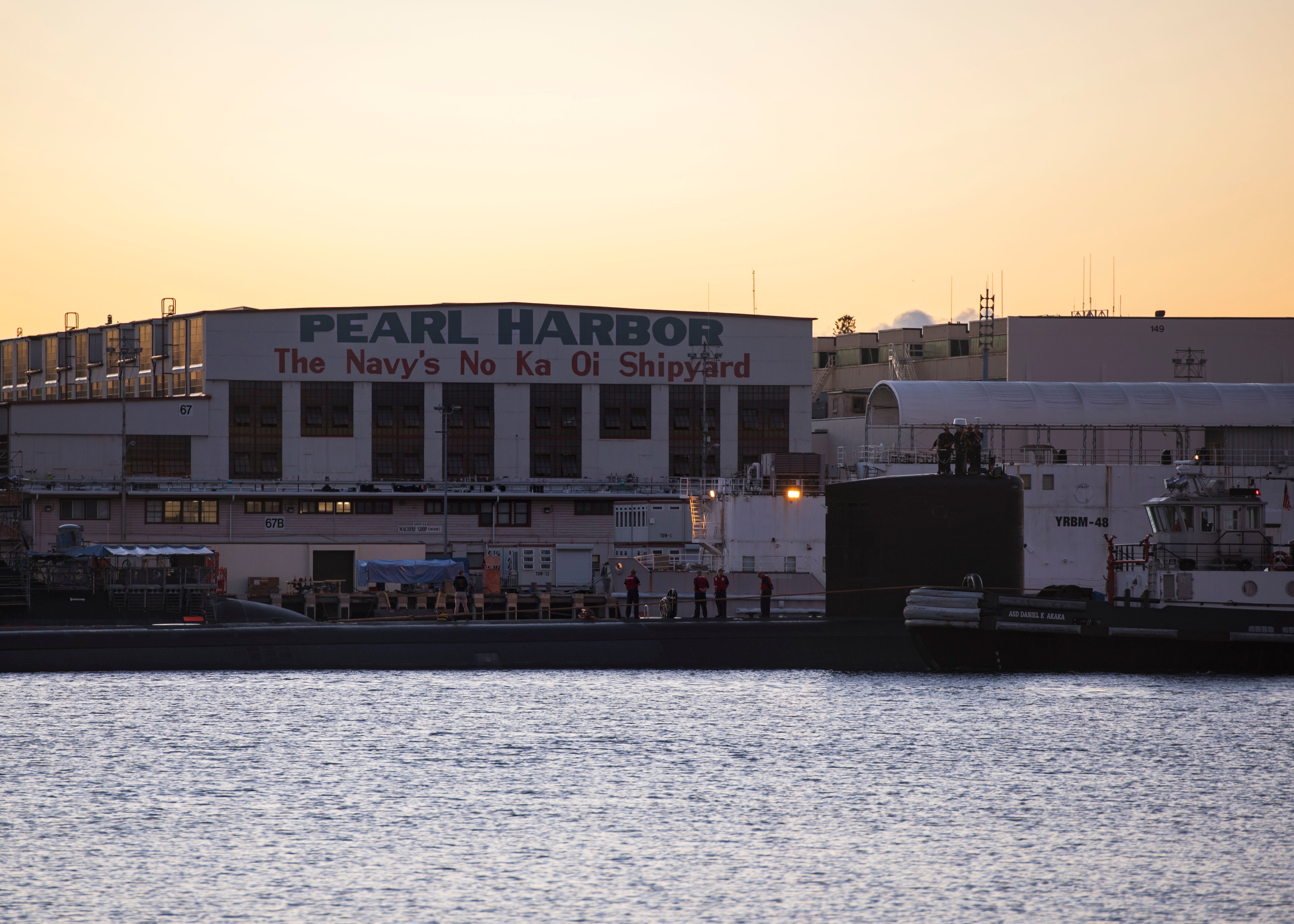
Under-funded, obsolete, out of room and wearing out is the status of the Navy’s shipyards according to a Government Accountability Office. report detailing the service’s ambitious decades-long and multi-billion-dollar facilities modernization plan.
The GAO report evaluates the Navy’s 2018 Shipyard Infrastructure Optimization Plan, a two-decade, $21 billion strategy to upgrade its four public shipyards – Norfolk Naval Shipyard in Virginia, Portsmouth Naval Shipyard in Maine, Puget Sound Naval Shipyard in Washington and Pearl Harbor Naval Shipyard in Hawaii.
However, the GAO report faults Navy officials for not developing more detailed cost estimates. In response, Navy officials told the GAO more detailed estimates will come after the service creates digital models of each shipyard to help develop plans to best use existing facilities and space.
These layouts “will drive the future efforts that address deficiencies associated with roads, utilities, sidewalks, and information technology systems, which are not addressed in the plan,” the report states.
The problem with this plan, according to the GAO, to move forward with the planned upgrades requires the Navy justifying its funding requests each year from lawmakers who already have voiced concerns over the service’s ability to tackling readiness challenges.
“Because the Navy will be required to request funding from Congress over 20 years in order to implement this plan, the lack of a reliable cost estimate places the effort at risk,” the report states.
During his July confirmation hearing, Chief of Naval Operations Adm. Michael Gilday acknowledged to Senate Armed Services Committee members the Navy currently doesn’t have the capacity at its shipyards to keep up with the amount of maintenance work required.
“We know that there are inefficiencies we need to turn around. The Navy’s gone out to private yards that we’ve never done business with before, yards that have drydocks, to see if they’re willing to get certified so that we can find that excess capacity that exists in the country and to tap into it,” Gilday said.
The problem with the public yards is they are old and were initially designed to cater to wind and steam-powered ships. The newest yard is 111 years old; the oldest is 252 years old. The Navy has upgraded the yards over the years, the GAO report states, “However, as we have reported, the shipyards’ age, residual configuration for the shipbuilding mission, and poor condition reduces their efficiency for their modern-day mission of repairing nuclear-powered ships and submarines.”
For example, at Pearl Harbor, the GAO report states building 155 is actively involved in submarine maintenance but is located one-third of a mile from the nearest dry dock. The additional travel time for material and personnel creates maintenance inefficiencies.
Meanwhile, Pearl Harbor’s Building 6, a former foundry close to the waterfront, hasn’t been used since the 1980s. The building’s distinctive three-tiered roof makes this a historic facility and will be difficult to restore and modernize, according to the GAO report.
Dry docks are an especially critical upgrade the Navy needs to start working on now. Eight of the Navy’s 18 dry docks require modernization projects and new equipment purchases to more efficiently maintain the fleet. The upgrades are expected to take 15 years to complete.
The Navy also needs to dramatically increase its annual budget for purchasing equipment, including heavy machinery in the yards. The Navy has historically spent between $50 million and $60 million on capital equipment, according to the GAO report. The Navy predicts it needs to increase this spending to $150 million per year for the life of the upgrade project – totaling $3 billion during the next 20 years.
The GAO suggests the Navy might be under-estimating the cost and length of time required to finish all desired capital upgrades. An additional decade and $1.5 billion could be needed, according to the GAO analysis.
“Navy officials have stated that they will attempt to address the shipyards’ equipment deficiencies over the 20-year time frame by taking advantage of different equipment purchasing strategies and gaining efficiencies from the facility optimization effort that will allow the Navy to recapitalize equipment more effectively than was possible with its previous strategies,” the GAO report states. “However, the efficacy of these strategies cannot be assessed until the Navy completes its modeling and simulation phase in Fiscal Year 2020 and develops more detailed plans for recapitalizing its shipyard equipment.”





